On this page we outline the process to folow for filing an international patent application. An international patent application is also referred to as a WO (WOrld) application or PCT (Patent Cooperation Treaty) application.
It is important to realize that an international patent application itself will not be granted. It is a temporary application that must be continued after the international phase as one or more national applications and/or a European application (which itself will lead to several national patents after being granted). An international application buys you a year and a half to postpone the (relatively expensive) step of selecting a country and to keep all options open.
- Choice for an international patent application
- Draft patent application
- Filing and handling formalities
- Search report en written opinion
- Publication
- No further obligations
- Optional reaction to search report
- Reporting and responding to communications
- National phase(s)
- Legend
Choice for an international patent application

If a (Dutch) patent application has already been filed for the invention, it can – possibly in adapted and/or translated form – be filed as an international patent application. Read more under “Filing and handling formalities”.
If no previous patent application has been filed for the invention, we start with an intake, in which we discuss the invention. This can be done by video calling, but also by e-mail or by telephone, depending on what the circumstances require. During the conversation, we ask what makes the invention novel in your view and we will indicate whether that invention is suitable for patent application, and whether, given the prior art in the field of the invention, there is a chance that an application will be successful. If the prior art is not exactly known, we can decide to do an investigation first. The central question to answer is “what exactly do you want to be able to prohibit your competitor from selling?”. This is because the main purpose of a patent is to secure exclusivity.
After the intake, we will send an order confirmation stating what we are going to do and for what amount, and as soon as we have received approval, we will get to work. The order confirmation and the amounts stated therein are valid for one month.
Draft patent application
We will then draw up a draft patent application. This is a technical legal text which consists of:
- a description of the invention, explaining what technical problem the invention solves compared to what already existed,
- preliminary figures of the invention; and
- claims: precise definitions of what exactly an exclusive right is requested for. There are always several claims, which become more specific in succession. The first claim describes what we prefer to get protection for, the next what we seek protection for if the broadest claim is not found to be new or inventive, and so on.
We normally need a lead time of two to three weeks for this.
When we send you the draft, we request you to examine it carefully and let us know any desired additions or modifications. We are aware that legal language is not easy to read, so if the text is not clear we would like you to give us a call. Of course also if the text is clear, but adjustments are required. We then adjust the draft if necessary and submit it again for approval.
Filing and formalities
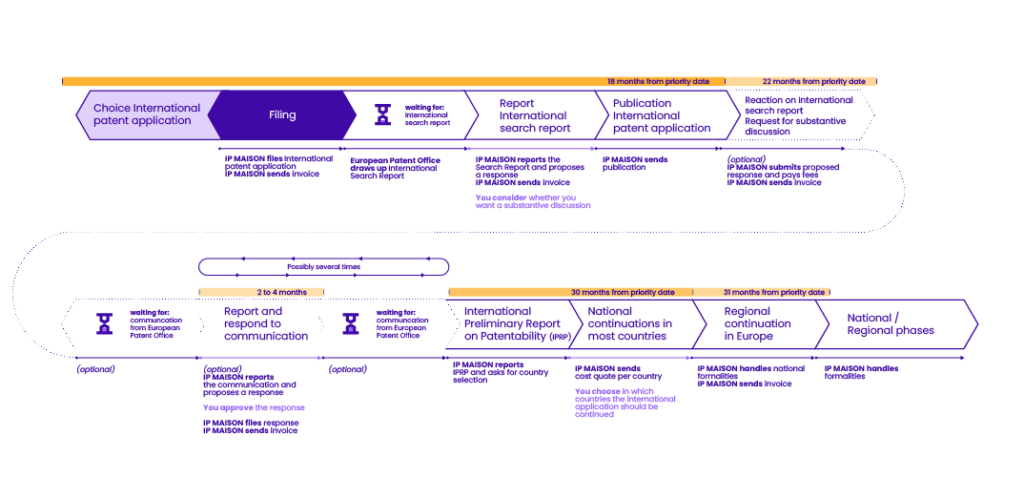
As soon as we have received your approval, we will submit the patent application as an international patent application to the European Patent Office. We authorize the debiting of the due taxes from our deposit account. You will receive a submission confirmation from us and we will send an invoice for our work.
Then we have to wait for the results of the novelty search to be carried out by the European Patent Office.
Search report en written opinion
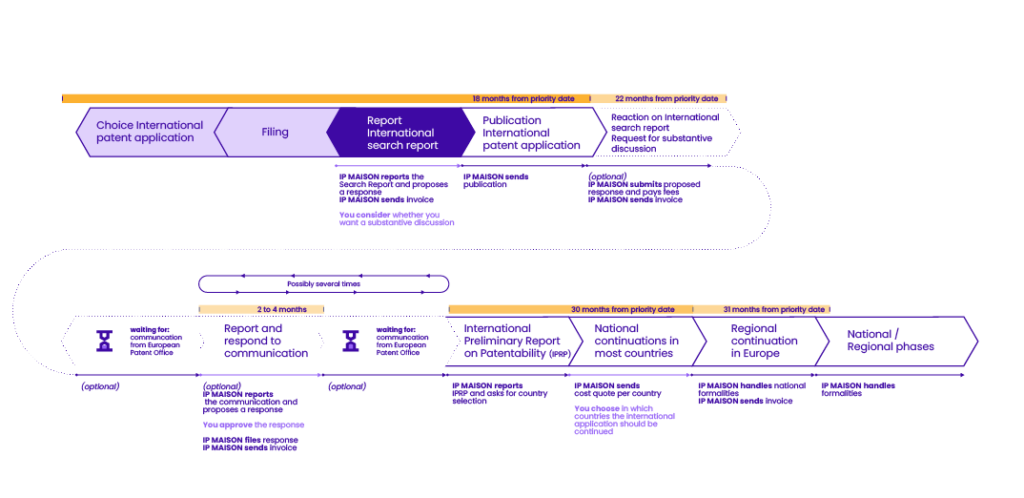
After a few months we receive a search report with written opinion from the European Patent Office. We study these documents and will subsequently send you a report in which we explain the findings of the examiner and propose how to respond. We will then discuss the proposal with you.
If the search report and the written opinion are completely identical to those of the search for the previous Dutch application, we will refer to our previous report and do not charge any costs. The European Patent Office may then also refund part of the official fee for the investigation. You will then receive a credit note from us for that amount.
Publication
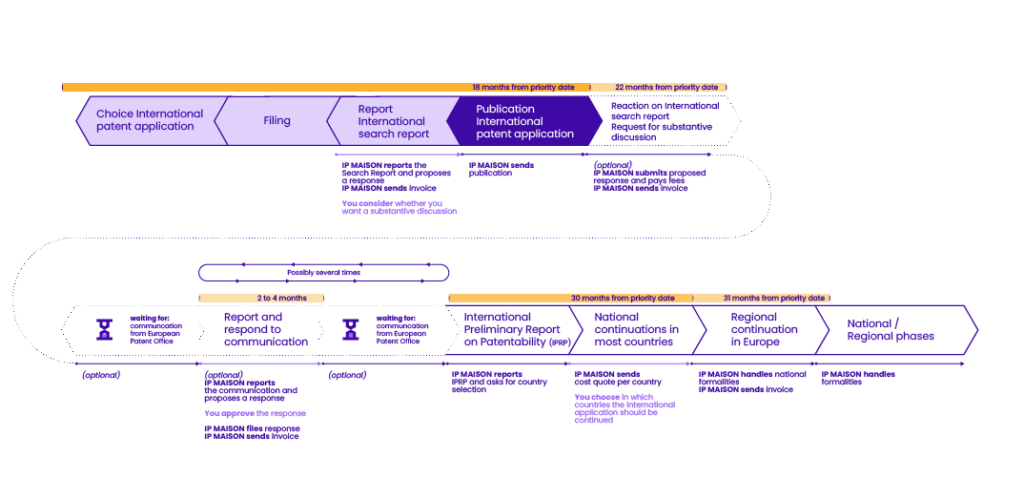
The international application is published 18 months after the priority date. If there was a previous (Dutch) application, this will take place 18 months after filing of that Dutch application, if the international application was the first application, then 18 months after filing of the international application.
No further obligations
During the international phase, which lasts at least 30 months after the filing date of the international patent application (or, if there was an earlier (Dutch) patent application, the filing date of that earlier patent application), a response to the search report is not mandatory. Further substantive correspondence can also be conducted in the national phase(s) following the international phase. If it is chosen not to respond, the search report and the associated written opinion automatically become the final report (International Preliminary Report on Patentability) of the international phase.
Optional reaction to search report
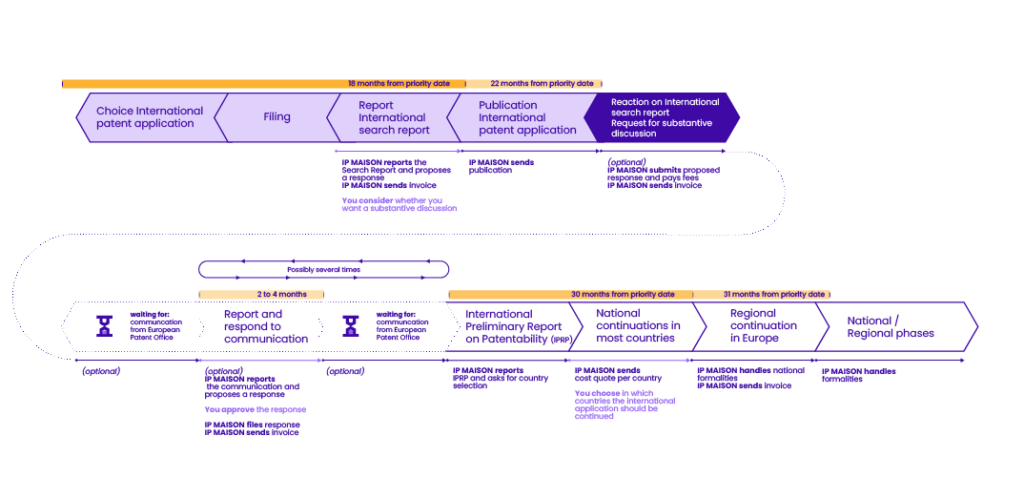
One can also choose to respond to the search report. Particularly when the objections in the search report are found to be unjustified, an attempt can be made to obtain a positive final report by submitting arguments or amended claims. Such a positive report can ensure that the granting process in the subsequent national phase(s) runs more smoothly and it can even be used for the decision whether or not to submit national applications. Because there are additional costs associated with a substantive discussion in the international phase, we will take a decision on this in consultation with you on the basis of the search report.
Reporting and responding to communications
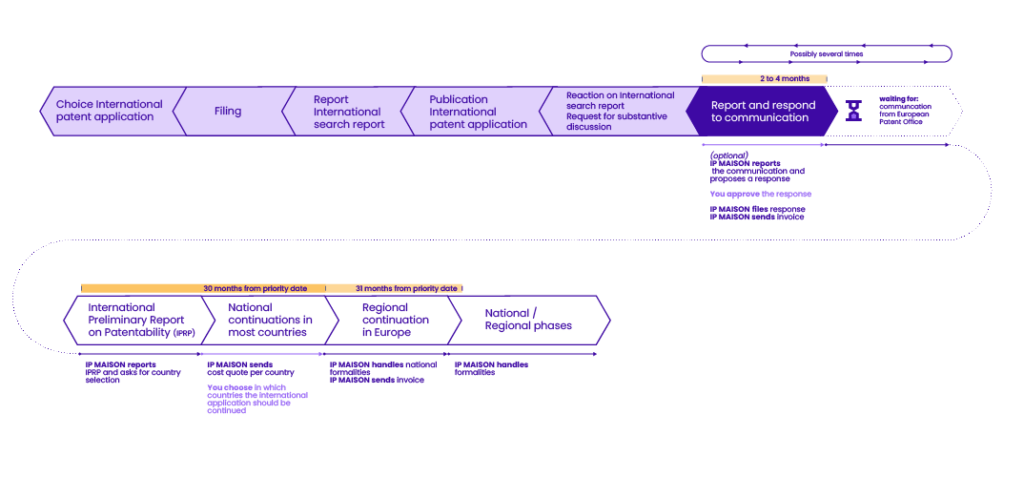
If a substantive response is chosen, the European Patent Office will send out a communication, to which we may also respond. Ultimately, the European Patent Office produces an International Preliminary Report on Patentability, which later serves as a starting point for the granting process in the national phase(s).
National phase(s)
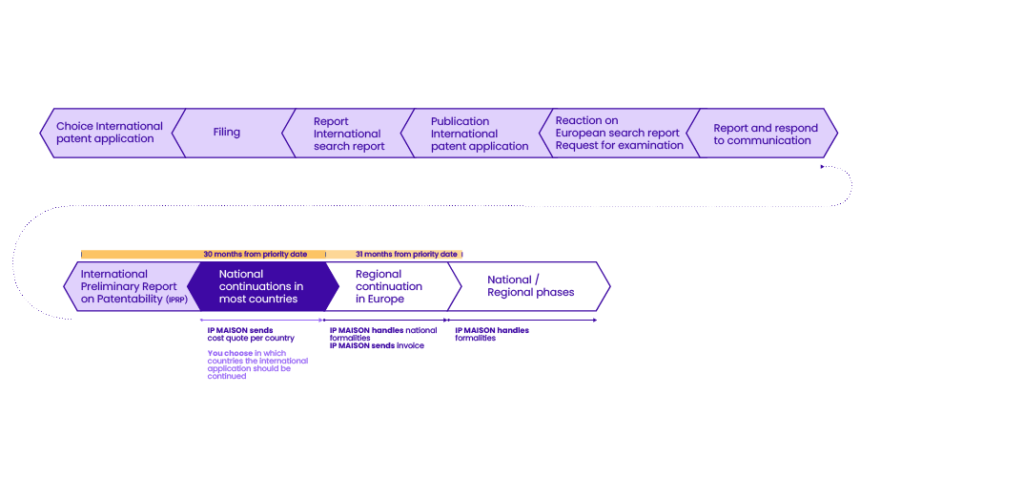
At the latest 30 months after the filing date of the international patent application (or, if there was an earlier (Dutch) patent application, the filing date of that earlier patent application), the international application must be continued as a national application in the countries where patent protection is ultimately wanted. For a continuation as a European application, this period is 31 months. We will remind you of this period in good time and will also send you an overview of the costs per country.
The granting process must then be completed for each selected country. These processes are independent of each other and a patent granted in one country does not guarantee that a patent will also be granted in another country.
Legend

The central bar, running from left to right, maps out the procedure being followed.

The dark purple oval marks the stage we have currently reached in the procedure.

A pale purple oval indicates a completed stage.
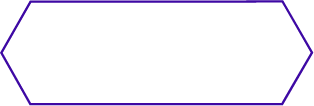
A white oval shows a future stage.
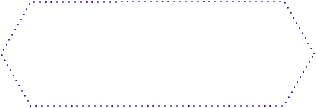
A white oval with a dotted line indicates that a step is optional.

A sand timer denotes that an agreement, or official documents, for example, are pending.

This step may need to be completed several times.

Any fixed periods
are marked above the central bar.

This stage is carried out by IP Maison.

This stage is carried out by the client.